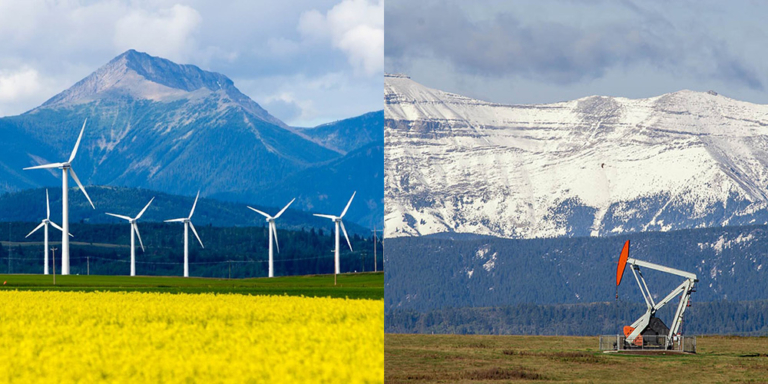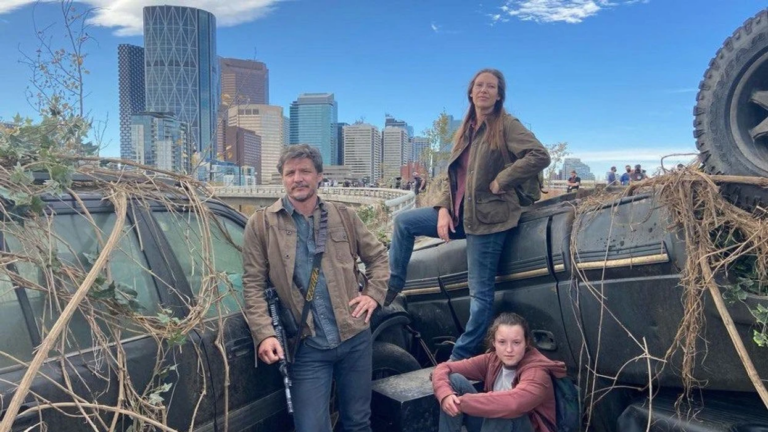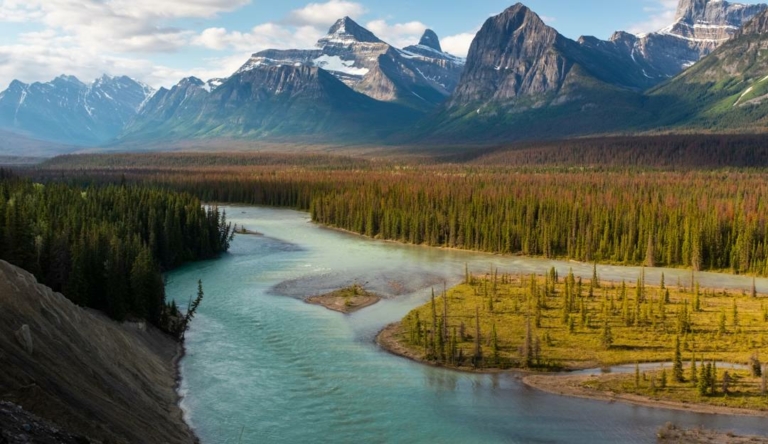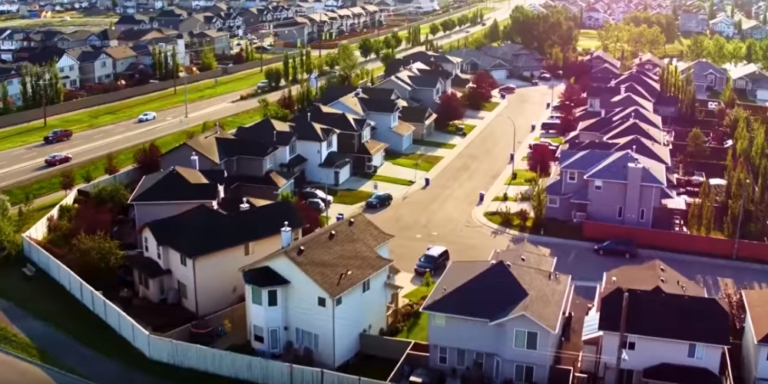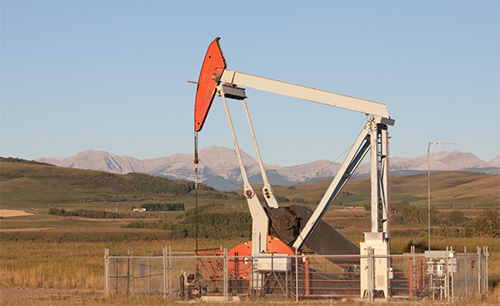
Most Albertans will recognize the infrastructure pictured to the right as an oil ‘pumpjack.’
It’s almost as iconic on our landscapes as wild roses, snow-capped peaks and bright canola fields.
Pumpjacks are also called donkey pumpers, oil horses, nodding donkeys, rocking horses, thirsty birds, grasshoppers, and beam pumps.
Pumpjacks, no matter what you call them, are machines used in oil wells. They help lift the oil up when there isn’t enough natural pressure to push it to the surface.
According to Oil Pro, 96% of oil wells require a pumpjack to bring under-pressured oil to the surface.
The video below gives a great overview if you’ve ever wondered how the nodding steel structures work.
What are Inactive Pumpjacks Called?
Alberta has over 466,000 oil and gas wells, one well for every 1.4 square kilometres of land.
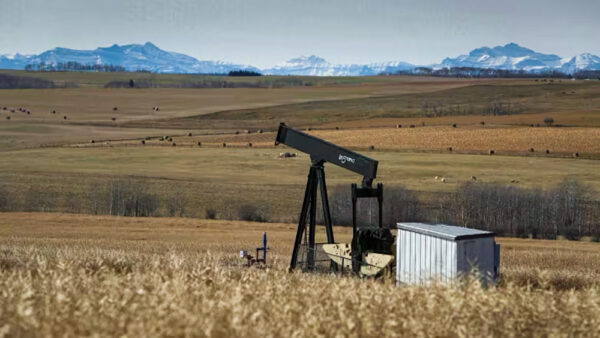
A recent Alberta Energy Regulator (AER) report says only about one in three of these wells are active.
The next photo shows an even more common view: an oil well pumpjack that is not actively producing, but what do we call these?
Orphaned, abandoned, reclaimed, suspended, or inactive?
Inactive wells dotting the Alberta landscape have been a hot topic lately, especially with worries that ‘orphaned’ wells are leaking toxic messes into our soil and groundwater. Raising questions about who should pay for well reclamation and remediation.
Below is a short primer to help clarify the definitions applied to inactive wells as outlined by Energy Now
Inactive—An inactive well means it has not produced oil or gas for 6 or 12 months.
Suspended—Once inactive, wells must be suspended (locked up) to ensure public safety and environmental protection. Wells can remain suspended until a company determines they are no longer needed for energy development and can be abandoned.
Abandoned—When a well is no longer needed, it is supposed to be permanently sealed and taken out of service. Plugs are inserted in the well to help prevent anything from reaching the surface. Although the sealed wells are not supposed to pose a risk to the environment or the public, leaks are possible. If a leak happens, the company responsible for repairing it must notify the Alberta Energy Regulator (AER).
Unfortunately, the word ‘abandoned’ leaves many Albertans feeling like the company responsible just walked away, but it hasn’t; it has just closed and sealed the well.
Reclaimed—Once an oil well has been properly closed and its surface facilities abandoned, the company can start remediation and reclamation efforts. The company must restore the disturbed land to a condition similar to its pre-development state and provide clear evidence that the site meets the remediation standards set by Alberta Environment and Parks.
Orphan— a well becomes an “orphan” if the Alberta Energy Regulator (AER) determines there are no legally responsible parties to manage its cleanup after the owner becomes insolvent. Orphan wells can be in various states: inactive, suspended, abandoned, or even actively producing.
Once a well and its site receive the orphan designation, the Orphan Well Association (OWA) takes over the site’s care and custody until the well is entirely abandoned (closed) and the site is reclaimed.
For more information, the video below makes clear the differences between abandoned and orphaned wells
Alberta’s System Is Filled with Loopholes
In theory, the process of taking an aging well that is no longer producing and moving it through all phases from inactive to remediation seems straightforward.
In practice, not so much.
So why are orphaned wells such a problem if the Orphan Well Association is on point in dealing with situations where the owner has become bankrupt or is unable to pay for remediation and reclamation?
There are big gaps in the system, and companies are exploiting them.
The first problem is that it is up to the oil company that owns the well to determine when their suspended wells should be deemed ‘abandoned (closed).
There is no incentive to do this quickly or penalty to delay. So, many abandoned wells are “suspended” indefinitely and sit for years, or even decades, before their owner decides to cough up the cash needed to reclaim the wellsite.
As a result, many of these suspended wells start leaking as the infrastructure rusts and rots.
If the company goes out of business before they clean up the mess, the abandoned well becomes an “orphan.”
And then, it’s up to the OWA to pay for and clean up the mess.
And where does the money for the OWA come from?
According to an OWA fact sheet, the Association is funded by Alberta’s oil and gas industry (not taxpayers) and overseen by the Alberta Energy Regulator (AER) but operates independently.
That sounds great. But the numbers don’t add up.
The oil industry should be responsible for cleaning up and paying for their messes, not Alberta taxpayers!
According to the OWA, “the industry levy for 2023/24 is set at $135 million, a level we expect will remain consistent over the next several years.”
Yet later, in the same document, OWA tells us: “With the support of the oil and gas industry, as well as provincial and federal government loans, we have decommissioned orphan wells at an accelerated rate for the past several years.”
So the Albertan public and Canadians are paying billions of dollars to clean up after the oil companies.
Why are we paying to clean up the mess of the industry generating billions in profits?
And how much have we paid?
Good questions!
It’s complicated, so we’ll try to lay it out simply in the next article in this series.


